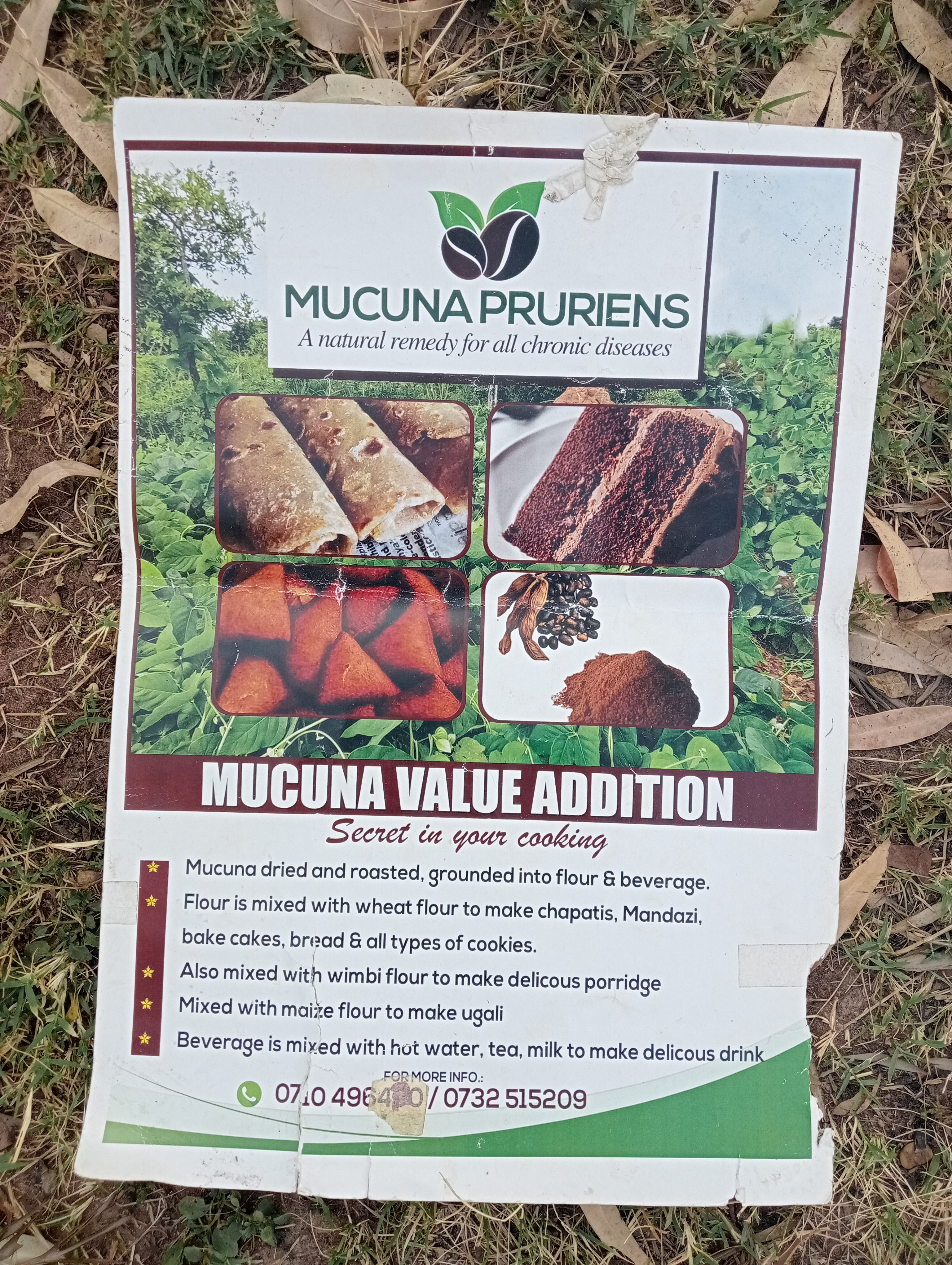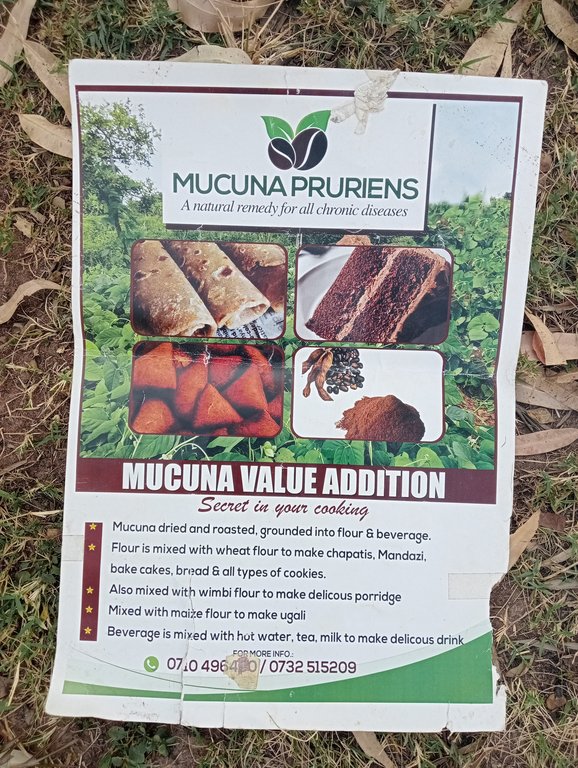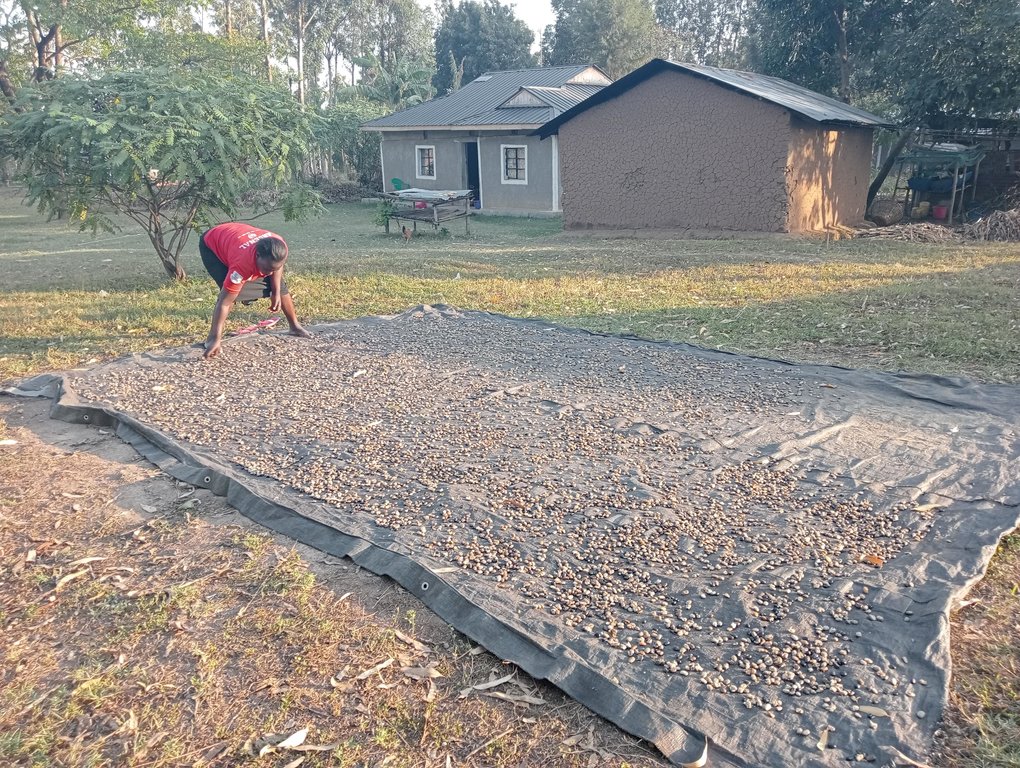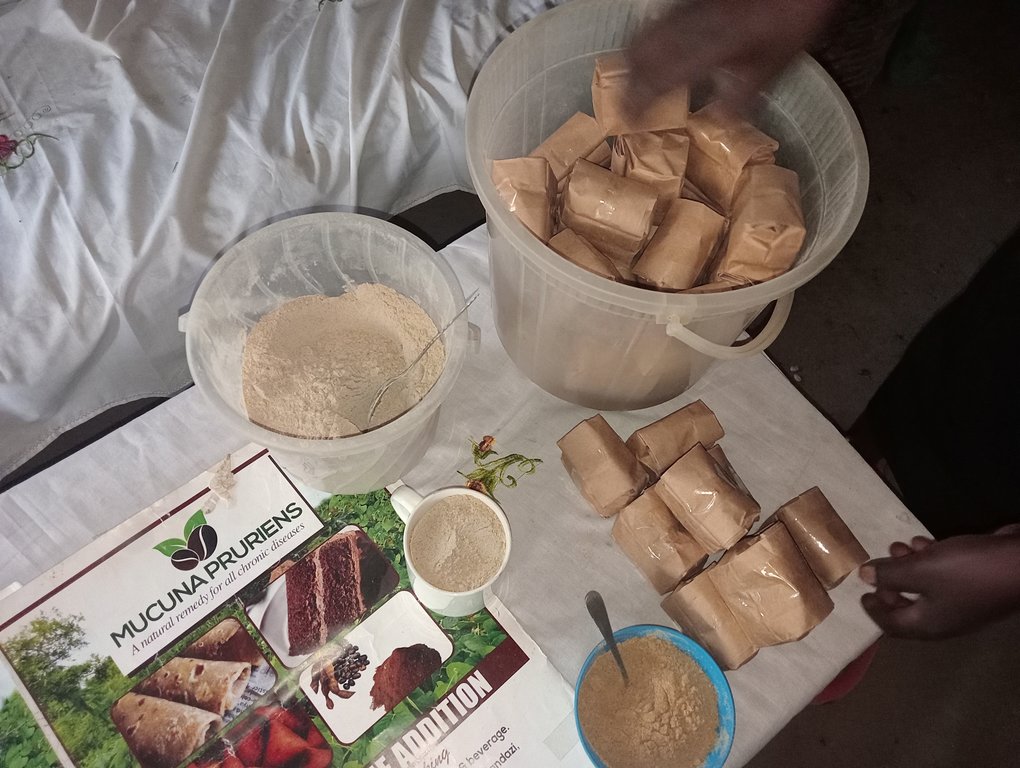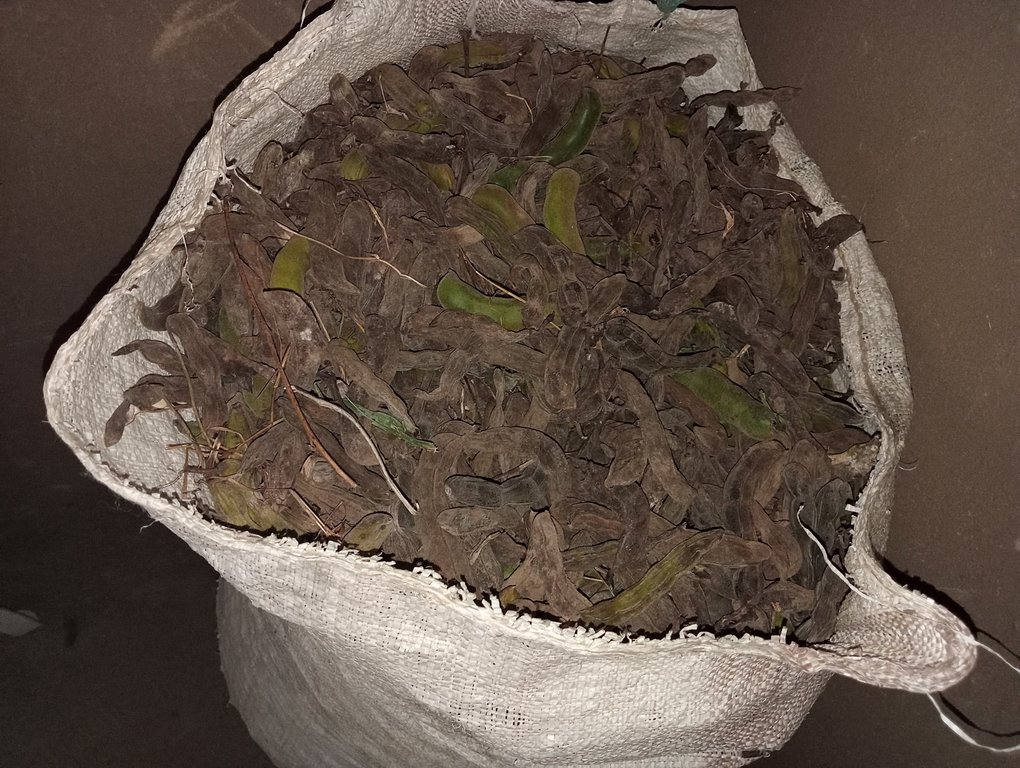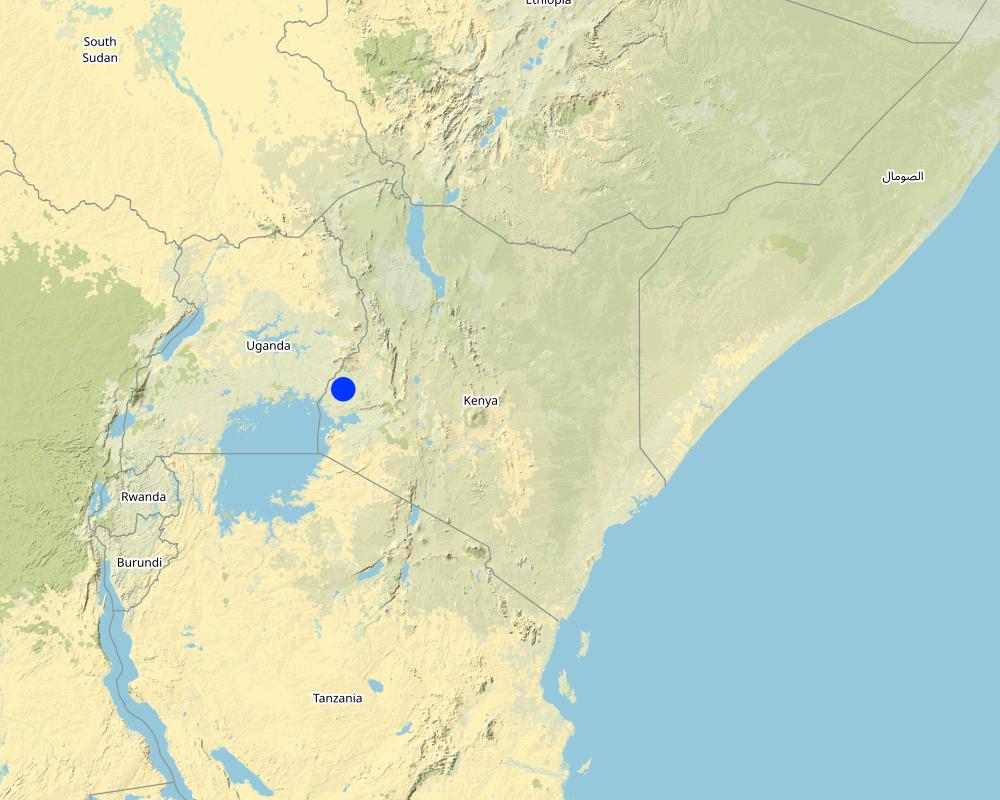Mucuna value-addition for female farmers [Quênia]
- Criação:
- Atualização:
- Compilador/a: William Akwanyi
- Editores: George Onyango, Innocent Faith, Noel Templer
- Revisores: William Critchley, Rima Mekdaschi Studer
N/A
approaches_6684 - Quênia
Veja as seções
Expandir tudo Recolher tudo1. Informação geral
1.2 Detalhes do contato das pessoas capacitadas e instituições envolvidas na avaliação e documentação da abordagem
Pessoa(s) capacitada(s)
usuário de terra:
Asievela Rebecca
+254 714 890016 / +254 731 265120
rebecca.asievela@gmail.com / N/A
Welthungerhilfe farmer
Rebecca Asievela's farm in Emachina Village, Koyonzo Ward, Matungu Sub-county, Kakamega County
Quênia
Especialista em GST:
Especialista em GST:
Nome do projeto que facilitou a documentação/avaliação da Abordagem (se relevante)
Soil protection and rehabilitation for food security (ProSo(i)l)Nome da(s) instituição(ões) que facilitou(ram) a documentação/avaliação da Abordagem (se relevante)
Deutsche Gesellschaft für Internationale Zusammenarbeit (GIZ)Nome da(s) instituição(ões) que facilitou(ram) a documentação/avaliação da Abordagem (se relevante)
Alliance Bioversity and International Center for Tropical Agriculture (Alliance Bioversity-CIAT) - Quênia1.3 Condições em relação ao uso da informação documentada através de WOCAT
Quando os dados foram compilados (no campo)?
28/01/2023
O/a compilador/a e a(s) pessoa(s) capacitada(s) aceitam as condições relativas ao uso de dados documentados através da WOCAT:
Sim
1.4 Referência ao(s) questionário(s) sobre tecnologias da GST
2. Descrição da abordagem de GST
2.1 Descrição curta da abordagem
Promoting mucuna seed processing for food and nutrition security and income generation encourages women farmers to plant mucuna as a cover crop that improves soil productivity.
2.2 Descrição detalhada da abordagem
Descrição detalhada da abordagem:
Mucuna pruriens (velvet bean) is tropical legume that is widely known for its ability to rehabilitate soils by increasing organic matter. Unlike many other legumes of the bean family, mucuna seeds (beans) are not very palatable. In addition, raw and unprepared mucuna beans can cause severe digestive disorders. However, due to its emerging health and economic benefits, many farmers are now adopting the crop. Consequently, the crop is simultaneously helping in soil conservation by controlling soil erosion and improving soil structure alongside suppressing weeds.
Promoting the economic benefits of mucuna through value addition is a key factor in ensuring farmers adopt mucuna as a conservation agriculture crop. Mucuna value addition involves various stages of beans preparation/ treatment aimed at reducing the potential of L-DOPA toxicity. The ProSoil project promoted the uptake of mucuna as a green manure cover crop by training farmers on mucuna bean value-addition. In Matungu area of Kakamega County, Kenya, the ProSoil project partnered with a local farmer-based self-help group, Tunza Udongo Self Help Group [‘tunza udongo’ is a Kiswahili phrase for ‘take care of the soil’] which facilitated the convening women farmers. The project facilitated specialists in mucuna value addition from the Ministry of Agriculture who trained the farmers.
To spread this approach, the trained farmers train other farmers. In addition to the training in mucuna value-addition, the farmers were informed about the ecological and economic importance of mucuna and its propagation. The ProSoil project (GIZ and WHH) and Ministry of Agriculture invite the farmers to events such as farmer field days where they can exhibit different products from mucuna, network, and link up with potential markets. On the other hand, Tunza Udongo Self Help plays an important role in collective marketing.
One aim of promoting mucuna value addition is to increase its uptake by farmers as a green manure cover crop which is an important measure in conservation agriculture. Mucuna beans preparation is a domestic chore equivalent to other chores that are traditionally performed by women. Consequently, the entire farming household benefits from the income from the sale of mucuna products (skin free beans, flour, beverage, and baked products). The prices of these products vary in time and space depending on the availability of and demand for the products. However, the average prices are KES 100.00 per kg of skin free beans, KES 120.00 per kg of flour, and KES 150.00 per kg of beverage. Farmers also sell unprocessed mucuna beans as seed at KES 100.00 – 200.00 per kg depending on the availability of, and demand for, the seeds.
2.3 Fotos da abordagem
Observações gerais sobre as fotos:
Processing of mucuna beans only requires equipment that are available in most households.
2.4 Vídeos da abordagem
Comentários, breve descrição:
https://vimeo.com/manage/videos/807802820/privacy
Winnowing boiled and sun-dried mucuna beans to remove skin.
Data:
28/01/2023
Localização:
Rebecca Asievela's farm in Emachina Village, Koyonzo Ward, Matungu Sub-county, Kakamega County
Nome do cinegrafista:
William Akwanyi
2.5 País/região/locais onde a abordagem foi aplicada
País:
Quênia
Região/Estado/Província:
Kakamega County in western Kenya
Especificação adicional de localização:
Emachina Village, Ejinja Sub-location, Koyonzo Location, Koyonzo Ward, Matungu Sub-county
Comentários:
GPS coordinates collected at the farm are 0.425487, 34.460523,
Map
×2.6 Datas de início e término da abordagem
Indique o ano de início:
2019
Comentários:
The approach is still being applied as many farmers are continuing to add value to mucuna and selling the products.
2.7 Tipo de abordagem
- Baseado em projeto/programa
2.8 Principais metas/objetivos da abordagem
To increase its farmers' uptake of mucuna as a green manure cover crop which is an important measure in conservation agriculture.
2.9 Condição que propiciam ou inibem a implementação de tecnologia/tecnologias aplicada(s) segundo a abordagem
Normas e valores sociais/culturais/religiosos
- Propício
Perceived health benefits of mucuna and food and nutritional value.
Colaboração/coordenção de atores
- Propício
Market linkages by GIZ and Welthungerhilfe partners.
Governança da terra (tomada de decisões, implementação e aplicação)
- Propício
Like many other crops of the bean family, mucuna is entirely managed by women.
Conhecimento sobre GST, acesso a suporte técnico
- Propício
Training by Welthungerhilfe specialists.
Mercados (para comprar entradas, vender produtos) e preços
- Propício
Availability of market as a result of increasing demand for mucuna products due to perceived health benefits of mucuna.
Carga de trabalho, disponibilidade de força de trabalho
- Propício
Processing requires equipment that are commonly available in most households.
- Inibitivo
Processing of mucuna beans is labour intensive.
Outro
- Propício
Githeri is Kenyan traditional meal, especially in Central Kenya. Adding processed mucuna beans to githeri makes it appealing. This is a motivation for many farmers to adopt mucuna.
3. Participação e papel das partes interessadas envolvidas
3.1 Partes interessadas envolvidas na abordagem e seus papéis
- Usuários de terra/comunidades locais
The farmers in the area who are mostly small-scale farmers due to the small parcels of land. Women farmers constituted 75%.
Mucuna value addition is a domestic chore equivalent to other women centric domestic chores that are traditionally performed by women. Hence, commonly done by women who are targeted by the value addition. However, the end result benefits the entire farming household.
- Organizações comunitárias
Tunza Udongo Self-Help Group
Convening farmers for training.
- Especialistas em GST/ consultor agrícola
GIZ ProSoil project SLM specialists and specialists from the implementing partner, Welthungerhilfe.
Provided technical advice to the farmers on how to process mucuna as a way of encouraging households to adopt mucuna as a green manure cover crop.
- Governo local
Extension staff from the county department of agriculture
Training farmers
- Organização internacional
GIZ
Financial support to the technical team and farmers during capacity building.
Caso várias partes interessadas foram envolvidas, indique a agência líder:
GIZ
3.2 Envolvimento do usuários de terra/comunidades locais nas diferentes fases da abordagem
| Envolvimento do usuários de terra/comunidades locais | Especifique quem estava envolvido e descreva as atividades | |
|---|---|---|
| Iniciação/motivação | Automobilização | Farmers involved in the training on mucuna value addition. |
| Planejamento | Participativo | Farmers consulted on where and when to conduct trainings and demonstrate mucuna value-addition. |
| Implementação | Automobilização | Each farmer processes his/ her own mucuna and decides on whether or not to sell the surplus products. Farmers look for their own markets. GIZ and Welthungerhilfe may link farmers to potential buyers. |
| Monitoramento/avaliação | Passivo | Interviews with implementing farmers. |
| Nenhum |
3.3 Fluxograma (se disponível)
Descrição:
The ProSoil Project consists of GIZ and the implementing partners in this case Welthungerhilfe (WHH). The project provides financial support to farmers through their groups for convening farmers for the trainings. The farmers are trained by technical staff from the County Ministry of Agriculture and sometimes by specialists from the ProSoil project. The county technical staff (trainers) are paid by the project through either GIZ or WHH.
Autor:
William Akwanyi
3.4 Decisão sobre a seleção de tecnologia/tecnologias de GST
Especifique quem decidiu sobre a seleção de tecnologia/tecnologias a serem implementadas:
- Principalmente usuários da terra, apoiados por especialistas em GST
Explique:
Decisions on what products to produce from mucuna were made mainly by land users supported by SLM specialists.
Especifique em que base foram tomadas as decisões:
- Avaliação de conhecimento bem documentado de GST (tomada de decisão baseada em evidências)
- Experiência pessoal e opiniões (não documentado)
4. Suporte técnico, reforço das capacidades e gestão do conhecimento
4.1 Reforço das capacidades/ formação
Foi oferecida formação aos usuários da terra/outras partes interessadas?
Sim
Especifique quem foi capacitado:
- Usuários de terra
- Equipe de campo/consultores
- Agriculture extension officers from the county department of agriculture
Caso seja relevante, especifique gênero, idade, status, etnia, etc.
Both men and women farmers, agriculture extension officers from the county department of agriculture, and project field staff (GIZ and WHH) were trained on mucuna value addition. The women constituted over 75% of the farmer trainees.
Tipo de formação:
- Agricultor para agricultor
- Áreas de demonstração
- Cursos
Assuntos abordados:
1. Agronomic practices for mucuna
2. Harvesting and post-harvest handling of mucuna beans
3. Processing of mucuna beans
4. Value addition to mucuna beans
5. Packaging of mucuna products
6. Marketing of mucuna products
Comentários:
Welthungerhilfe facilitated a consultant to train of agriculture extension officers from the county department of agriculture, especially agroeconomists. The trained officers later trained the farmers in groups. The trained farmers have been training other farmers through farmer-to-farmer peer learning approach.
4.2 Serviço de consultoria
Os usuários de terra têm acesso a um serviço de consultoria?
Sim
Especifique se foi oferecido serviço de consultoria:
- nas áreas dos usuários da terra
- Specific locations where the farmers interact with the technical officers
Descreva/comentários:
Technical officers advise farmers at their homesteads whenever they visit them. Meetings are held on needs basis between farmers and the technical officers where pieces of advice are given to farmers.
4.3 Fortalecimento da instituição (desenvolvimento organizacional)
As instituições foram fortalecidas ou estabelecidas através da abordagem?
- Sim, pouco
Especifique a que nível (níveis) as instituições foram fortalecidas ou estabelecidas:
- Local
Descreva instituição, papéis e responsabilidades, membros, etc.
Farmer groups, groups promote farmer-to-farmer peer learning.
Especifique o tipo de apoio:
- Reforço das capacidades/ formação
Dê mais detalhes:
Knowledge on how to market their products.
4.4 Monitoramento e avaliação
Monitoramento e avaliação são partes da abordagem?
Sim
Comentários:
The ProSoil project (GIZ and Welthungerhilfe) and the County Department of Agriculture regularly follows up with farmers to check on the implementation of technologies promoted under this approach through annual surveys involving key informant interviews (KII), focus group discussions (FGDs), and household surveys.
Caso afirmativo, esta documentação é destinada a ser utilizada para monitoramento e avaliação?
Não
Comentários:
This documentation in intended for keeping a record of SLM technologies and approaches.
4.5 Pesquisa
A pesquisa foi parte da abordagem?
Não
5. Financiamento e apoio material externo
5.1 Orçamento anual para o componente de GST da abordagem
Caso o orçamento exato seja desconhecido, indique a faixa:
- 10.000-100.000
Comentários (p. ex. principais fontes de recursos/principais doadores):
Costs met by GIZ ProSoil project and included facilitation of transport to farmers (25 farmers) and trainers and remuneration to trainers. Other costs include support to farmers to purchase mucuna seeds.
5.2 Apoio financeiro/material concedido aos usuários da terra
Os usuários da terra receberam apoio financeiro/material para a implementação de tecnologia/tecnologias?
Sim
Caso afirmativo, especifique tipo(s) de apoio, condições e fornecedor(es):
Welthungerhilfe supported the farmers (through their group) with mucuna seeds.
5.3 Subsídios para entradas específicas (incluindo mão-de-obra)
Se a mão-de-obra pelos usuários da terra foi uma entrada substancial, isso foi:
- Voluntário
Comentários:
Farmers voluntarily provided labour at the demonstration plot.
5.4 Crédito
Foi concedido crédito segundo a abordagem para atividades de GST?
Não
5.5 Outros incentivos ou instrumentos
Foram utilizados outros incentivos ou instrumentos para promover a implementação das tecnologias de GST?
Não
6. Análise de impactos e declarações finais
6.1 Impactos da abordagem
A abordagem propiciou a tomada de decisão baseada em evidências?
- Não
- Sim, pouco
- Sim, moderadamente
- Sim, significativamente
As a result of the economic value of mucuna i.e., sale of mucuna products for income, farmers made the decision to plant mucuna on their farms.
A abordagem auxiliou os usuários da terra a implementar e manter as tecnologias de GST?
- Não
- Sim, pouco
- Sim, moderadamente
- Sim, significativamente
Income generated from sell of value-added mucuna product motivated farmers to plant mucuna which is a green manure permanent soil cover crop.
A abordagem aprimorou o conhecimento e as capacidades dos usuários da terra para implementar a GST?
- Não
- Sim, pouco
- Sim, moderadamente
- Sim, significativamente
Farmers were trained on agronomic practices for mucuna, hence improving their knowledge of using mucuna as a cover crop in conservation agriculture.
A abordagem concedeu autonomia aos grupos social e economicamente desfavorecidos?
- Não
- Sim, pouco
- Sim, moderadamente
- Sim, significativamente
Women often have very little control over land-use, but they are able to plant mucuna even on very small pieces of land for and sell its products for income.
A abordagem melhorou a igualdade de gêneros e concedeu autonomia a mulheres e meninas?
- Não
- Sim, pouco
- Sim, moderadamente
- Sim, significativamente
Women were able to plant mucuna even on very small pieces of land for and sell its products for income.
A abordagem encorajou os jovens/as próximas gerações de usuários de terra a se envolverem na GST?
- Não
- Sim, pouco
- Sim, moderadamente
- Sim, significativamente
Income generated from sell of mucuna products is amotivation for young people to plant mucuna.
A abordagem resultou em segurança alimentar aprimorada/nutrição melhorada?
- Não
- Sim, pouco
- Sim, moderadamente
- Sim, significativamente
Mucuna beans can be processed into various food products - flour for baking bread, edible beans, and beverage. The farmer reported that she has experienced positive well-being since she started eating mucuna products. She stated that mucuna can be used to treat various diseases, including ulcers, arthritis, and blood pressure problems.
A abordagem aprimorou a capacidade dos usuários da terra de adaptar-se a mudanças climáticas/extremos e atenuar os desastres relacionados com o clima?
- Não
- Sim, pouco
- Sim, moderadamente
- Sim, significativamente
Farmers plant mucuna as a cover crop to prevent water lost from their soils.
6.2 Principal motivação dos usuários da terra para implementar a GST
- Produção aumentada
Mucuna increases nitrogen and organic matter in the soil, hence improved crop production.
- Lucro (lucrabilidade) aumentado, melhora da relação custo-benefício
Mucuna is integrated with other crops, especially maize hence increasing the profit of the land. The income generated from sell of mucuna products increases farm profitability.
- Degradação do solo reduzida
Mucuna as a cover crop reduces soil erosion.
- melhoria dos conhecimentos e aptidões de GST
Farmers have enhanced their knowledge of mucuna value addition. They also train other farmers.
6.3 Atividades de sustentabilidade de abordagem
Os usuários da terra podem manter o que foi implementado através da abordagem (sem apoio externo)?
- Sim
Caso afirmativo, descreva como:
Farmers produce their own mucuna seed and use the surplus beans as food or process them into different products. Mucuna is a perennial crop and farmers are able to retain it in the farm for more than one season. The farmers are also motivated to continue planting mucuna and producing different products for sell.
6.4 Pontos fortes/vantagens da abordagem
| Pontos fortes/vantagens/oportunidades na visão do usuário da terra |
|---|
| It is an income generating activity. |
| Keeps people busy at home while at the same time generating income. |
| Mucuna has several health benefits. |
| Pontos fortes/vantagens/oportunidades na visão do/a compilador/a ou de outra pessoa capacitada |
|---|
| Improves livelihoods of the land users. |
| Yields are often high. Hence, the beans for value addition are available. |
| Growing market due to increasing awareness about the value of the crop. |
6.5 Pontos fracos, desvantagens da tecnologia e formas de superá-los
| Pontos fracos/desvantagens/riscos na visão do usuário da terra | Como eles podem ser superados? |
|---|---|
| Labour intensive | Commitment and proper planning of farm work. |
| A lot of fuel required to boil the beans. | Farmers to incorporate agroforestry trees at their farms as a source of firewood. |
| Pontos fracos/vantagens/riscos na visão do/a compilador/a ou de outra pessoa capacitada | Como eles podem ser superados? |
|---|---|
| Consumption rate is low due to its low palatability. At the same time, it is consumed in small quantities. | Expand the market through market research. |
| Fear of L-DOPA poisoning. | Increase awareness about processing mucuna before consumption. |
7. Referências e links
7.1 Métodos/fontes de informação
- visitas de campo, pesquisas de campo
One field visit to the land user.
- entrevistas com usuários de terras
One on-farm interview and follow-up calls with the land user.
- entrevistas com especialistas em GST
Interview with Welthungerhilfe SLM specialist and several follow-up calls.
- compilação de relatórios e outra documentação existente
Online literature sources reviewed.
7.2 Referências às publicações disponíveis
Título, autor, ano, ISBN:
Promoting Mucuna Beans Production for Soil Rehabilitation, Incomes, Food and Nutrition Security in Kenya, by Mary Stella Wabwoba and Kenneth Mutoro, 2019, ISSN: 2644-2981
Disponível de onde? Custos?
Free download at https://irispublishers.com/gjnfs/fulltext/promoting-mucuna-beans-production-for-soil-rehabilitation-incomes-food-and-nutrition-security.ID.000543.php
7.3 Links para informação relevante que está disponível online
Título/ descrição:
Processing of Mucuna for Human Food in the Republic of Guinea
URL:
https://www.redalyc.org/pdf/939/93911288020.pdf
Links e módulos
Expandir tudo Recolher tudoLinks
Não há links
Módulos
Não há módulos


